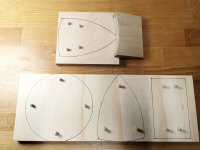presidentsdad
Member
- Joined
- Jan 15, 2019
- Messages
- 92
Hey all...I could swear I'd seen this conversation before, but for some reason I cannot find it tonight. Anyway...I have an RO 150 and like it, but it is a bit heavy for larger projects. So...I'd like to add an ETS EC 150 sander to my collection, but which would be better for my situation, the 5mm stroke or the 3mm stroke? I mainly do cabinets, shop type projects, and some furniture building. Probably nothing anyone would call fine furniture. Mainly wondering if the 3mm would be a better addition since the RO 150 will already do 5mm in ROS mode. Or if the 5mm would just be better overall for my needs and just stick the RO 150 in Rotex (geared) mode. Need some help please! 


